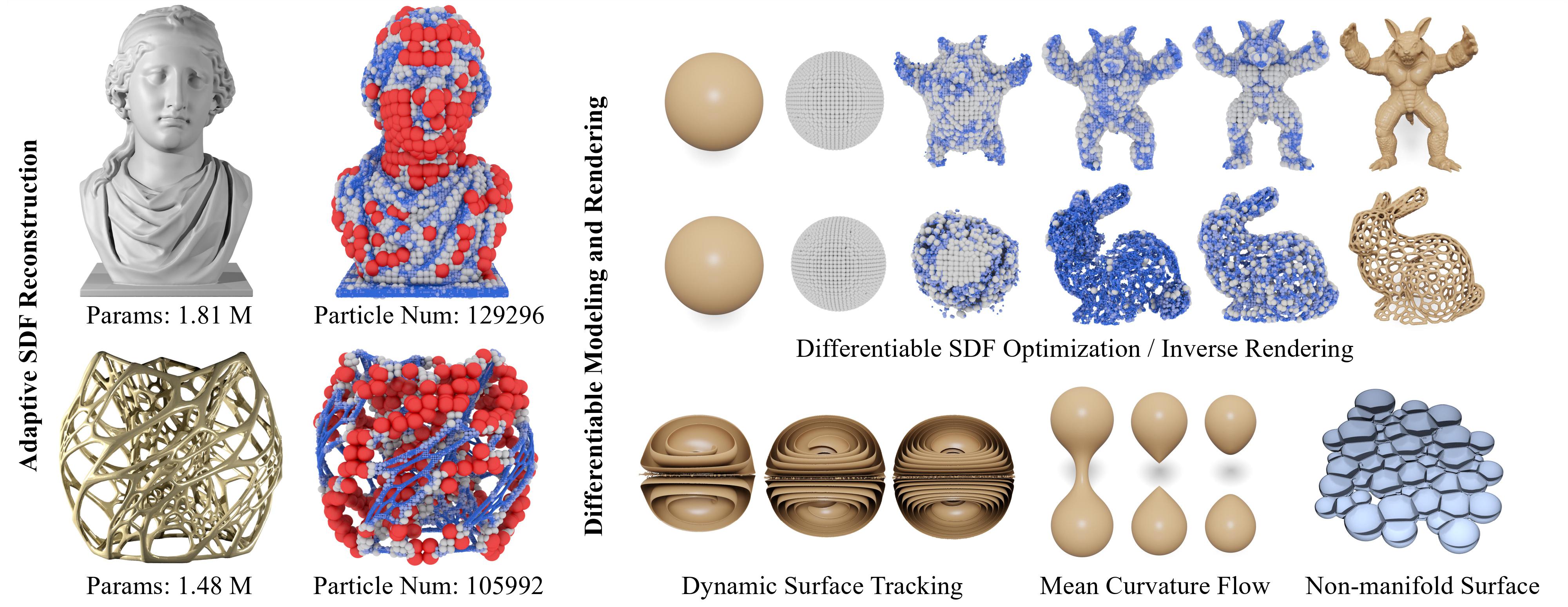Multi-level Partition of Unity on Differentiable Moving Particles
ACM Transactions on Graphics (Proc. SIGGRAPH Asia 2024)
Jinjin He1, Taiyuan Zhang1, Hiroki Kobayashi3, Atsushi Kawamoto3, Yuqing Zhou4, Tsuyoshi Nomura3, and Bo Zhu2
1 Dartmouth College; 2 Georgia Institute of Technology; 3 Toyota Central R&D Labs., Inc.; 4 Toyota Research Institute of North America

Abstract
We introduce a differentiable moving particle representation based on the multi-level partition of unity (MPU) to represent dynamic implicit geometries. At the core of our representation are two groups of particles, named feature particles and sample particles, which can move in space and produce dynamic surfaces according to external velocity fields or optimization gradients. These two particle groups iteratively guide and correct each other by alternating their roles as inputs and outputs. Each feature particle carries a set of coefficients for a local quadratic patch. These particle patches are assembled with partition-of-unity weights to derive a continuous implicit global shape. Each sampling particle carries its position and orientation, serving as dense surface samples for optimization tasks. Based on these moving particles, we develop a fully differentiable framework to infer and evolve highly detailed implicit geometries, enhanced by a multi-level background grid for particle adaptivity, across different inverse tasks. We demonstrated the efficacy of our representation through various benchmark comparisons with state-of-the-art neural representations, achieving lower memory consumption, fewer training iterations, and orders of magnitude higher accuracy in handling topologically complex objects and dynamic tracking tasks.
Paper
Full Video
Citation
title={Multi-level Partition of Unity on Differentiable Moving Particles},
author={Jinjin He and Taiyuan Zhang and Hiroki Kobayashi and Atsushi Kawamoto and Yuqing Zhou and Tsuyoshi Nomura and Bo Zhu},
journal={ACM Trans. Graph.},
volume={43},
number={6},
article={273},
year={2024},
}